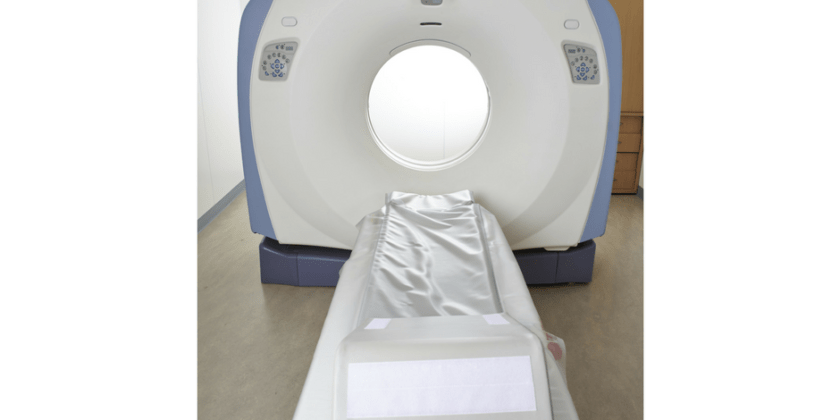Have you wondered about the liquid given before a CT scan1 or X-ray procedure is done? Did someone give you an information sheet talking about the possible adverse drug effects? Any adverse drug effects if you are diabetic? Jay Harold will discuss an important warning from the Food and Drug Administration (FDA) about a diabetic medication (metformin) and Iodinated contrast agents.
First, let’s define what a CT Scan is
A CT Scan uses a computer linked to an x-ray machine to make a series of detailed pictures of areas inside the body. The pictures are taken from different angles and are used to create 3-dimensional (3-D) views of tissues and organs. A dye may be injected into a vein or swallowed to help the tissues and organs show up more clearly. A CT scan may be used to help diagnose disease, plan treatment, or find out how well treatment is working. Also called CAT scan, computed tomography scan, computerized axial tomography scan, and computerized tomography.
Iodinated contrast agents
Iodinated contrast agents have been in use since the 1950s to facilitate radiographic imaging modalities. Physicians in almost all specialties will either administer these agents or care for patients who have received these drugs2 .
By far the most successful and widely applied contrast agents in use today are the iodinated contrast agents (ICAs), first introduced into clinical practice in the 1950s. It is estimated that approximately 75 million doses of ICAs are given worldwide each year.
Why is Metformin prescribed?
Metformin3 is used alone or with other medications, including insulin, to treat type 2 diabetes (condition in which the body does not use insulin normally and, therefore, cannot control the amount of sugar in the blood). Metformin is in a class of drugs called biguanides. Metformin helps to control the amount of glucose (sugar) in your blood. It decreases the amount of glucose you absorb from your food and the amount of glucose made by your liver. Metformin also increases your body’s response to insulin, a natural substance that controls the amount of glucose in the blood. Metformin is not used to treat type 1 diabetes (condition in which the body does not produce insulin and therefore cannot control the amount of sugar in the blood).
Over time, people who have diabetes and high blood sugar can develop serious or life-threatening complications, including heart disease, stroke, kidney problems, nerve damage, and eye problems. Taking medication(s), making lifestyle changes (e.g., diet, exercise, quitting smoking), and regularly checking your blood sugar may help to manage your diabetes and improve your health. This therapy may also decrease your chances of having a heart attack, stroke, or other diabetes-related complications such as kidney failure, nerve damage (numb, cold legs or feet; decreased sexual ability in men and women), eye problems, including changes or loss of vision, or gum disease. Your doctor and other healthcare providers will talk to you about the best way to manage your diabetes.
How should this medicine be used?
Metformin comes as a liquid, a tablet, and an extended-release (long-acting) tablet to take by mouth. The liquid is usually taken with meals one or two times a day. The regular tablet is usually taken with meals two or three times a day. The extended-release tablet is usually taken once daily with the evening meal. To help you remember to take metformin, take it around the same time(s) every day. Follow the directions on your prescription label carefully, and ask your doctor or pharmacist to explain any part you do not understand. Take metformin exactly as directed. Do not take more or less of it or take it more often than prescribed by your doctor.

Before taking metformin:
- tell your doctor and pharmacist if you are allergic to metformin, any of the ingredients of metformin liquid or tablets, or any other medications. Ask your pharmacist or check the manufacturer’s patient information for a list of the ingredients.
- Tell your doctor and pharmacist what other prescription and nonprescription medications, vitamins, nutritional supplements, and herbal products you are taking. Be sure to mention any of the following: amiloride (Midamor); angiotensin-converting enzyme (ACE) inhibitors such as benazepril (Lotensin, in Lotrel), captopril, enalapril (Vasotec, in Vaseretic), fosinopril, lisinopril (in Zestoretic), moexipril (Univasc), perindopril (Aceon), quinapril (Accupril), ramipril (Altace), and trandolapril (Mavik); beta-blockers such as atenolol (Tenormin), labetalol (Trandate), metoprolol (Lopressor, Toprol XL), nadolol (Corgard, in Corzide), and propranolol (Hemangeol, Inderal, InnoPran); calcium channel blockers such as amlodipine (Norvasc), diltiazem (Cardizem, Cartia, Diltzac, others), felodipine, isradipine, nicardipine (Cardene), nifedipine (Adalat, Afeditab CR, Procardia), nimodipine (Nymalize), nisoldipine (Sular), and verapamil (Calan, Covera, Verelan, in Tarka); cimetidine (Tagamet); digoxin (Lanoxin); diuretics (‘water pills’); furosemide (Lasix); hormone replacement therapy; insulin or other medications for diabetes; isoniazid (Laniazid, in Rifamate, in Rifater); medications for asthma and colds; medications for mental illness and nausea; medications for thyroid disease; morphine (MS Contin, others); niacin; oral contraceptives (‘birth control pills’); oral steroids such as dexamethasone, methylprednisolone (Medrol), and prednisone (Rayos); phenytoin (Dilantin, Phenytek); procainamide; quinidine (in Nuedexta); quinine; ranitidine (Zantac); triamterene (Dyrenium, in Maxzide, others); trimethoprim (Primsol); or vancomycin (Vancocin). Your doctor may need to change the doses of your medications or monitor you carefully for side effects.
- Tell your doctor if you have or have ever had any medical condition, especially those mentioned in the important lactic acidosis section.
- Tell your doctor if you are pregnant, plan to become pregnant, or are breastfeeding. If you become pregnant while taking metformin, call your doctor.
- Tell your doctor if you eat less or exercise more than usual. This can affect your blood sugar. Your doctor will give you instructions if this happens.
What special dietary instructions should I follow?
Be sure to follow all exercise and dietary recommendations made by your doctor or dietitian. It is essential to eat a healthful diet.
This medication may cause changes in your blood sugar. You should know the symptoms of low and high blood sugar and what to do if you have these symptoms. Metformin may cause side effects. Tell your doctor if any of these symptoms are severe, do not go away, go away and come back, or do not begin for some time after you start taking metformin:
- diarrhea
- bloating
- stomach pain
- gas
- indigestion
- constipation
-

unpleasant metallic taste in the mouth
- heartburn
- a headache
- flushing of the skin
- nail changes
- muscle pain
Some side effects can be severe. If you experience any of these symptoms or those listed in the IMPORTANT WARNING section, call your doctor immediately or get emergency treatment:
- chest pain
- rash
Metformin may cause other side effects. Call your doctor if you have any unusual problems while taking this medication.In case of emergency/overdose call your local poison control center at 1-800-222-1222. If the victim has collapsed or is not breathing, call local emergency services at 911.
Symptoms of overdose may include hypoglycemia symptoms as well as the following:
- extreme tiredness
- weakness
- discomfort
- vomiting
- nausea
- stomach pain
- decreased appetite
- deep, rapid breathing
- shortness of breath
- dizziness

- abnormally fast or slow heartbeat
- flushing of the skin
- muscle pain
- feeling cold
What is Lactic acidosis4 ?
Causes
The most common cause of lactic acidosis is intense exercise. However, it can also be caused by certain diseases, such as:
- AIDS
- Cancer
- Kidney failure
- Respiratory failure
- Sepsis
A common medicine used to treat diabetes called metformin can also cause lactic acidosis. If you take this medicine, have your electrolyte levels checked 1 to 2 weeks after starting it.
Symptoms
Symptoms may include:
- Nausea
- Weakness
Important Lactic acidosis Warning from the FDA
Metformin may rarely cause a serious, life-threatening condition called lactic acidosis. Tell your doctor if you have kidney disease. Your doctor will probably tell you not to take metformin. Also, tell your doctor if you are over 65 years old and if you have ever had a heart attack; stroke; diabetic ketoacidosis (blood sugar that is high enough to cause severe symptoms and requires

Tell your doctor if you have recently had any of the following conditions, or if you develop them during treatment: serious infection; severe diarrhea, vomiting, or fever; or if you drink much less fluid than usual for any reason. You may have to stop taking metformin until you recover.
If you are having surgery, including dental surgery, or any major medical procedure, tell the doctor that you are taking metformin. Also, tell your doctor if you plan to have any x-ray procedure in which dye is injected, especially if you drink or have ever drunk large amounts of alcohol or have or have had liver disease or heart failure. You may need to stop taking metformin before the procedure and wait 48 hours to restart treatment. Your doctor will tell you exactly when you should stop taking metformin and when you should start taking it again.
If you experience any of the following symptoms, stop taking metformin and call your doctor immediately: extreme tiredness, weakness, or discomfort; nausea; vomiting; stomach pain; decreased appetite; deep and rapid breathing or shortness of breath; dizziness; lightheadedness; fast or slow heartbeat; flushing of the skin; muscle pain; or feeling cold, especially in your hands or feet.
Tell your doctor if you regularly drink alcohol or sometimes drink large amounts of alcohol in a short time (binge drinking). Drinking alcohol increases your risk of developing lactic acidosis or may cause a decrease in blood sugar. Ask your doctor how much alcohol is safe to drink while you are taking metformin.
Keep all appointments with your doctor and the laboratory. Your doctor will order certain tests before and during treatment to check how well your kidneys are working and your body’s response to metformin. Talk to your doctor about the risk(s) of taking metformin.
Not Reading and Understanding the Medical Information given to you can be dangerous!
Enjoyed this post? Share it and read more here. Jay Harold has put together a Resource page that you may find useful when trying to improve your health and wealth. Please take this advice from Muhammad Ali and give back to others. “Service to others is the rent you pay for your room here on earth.”




